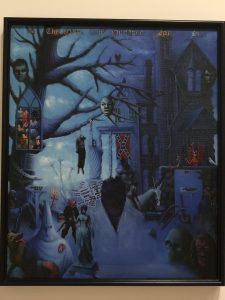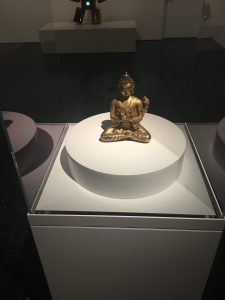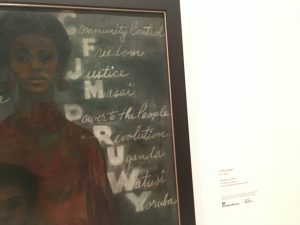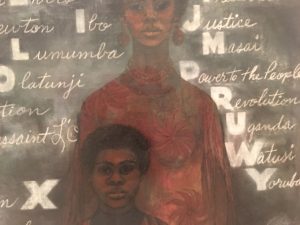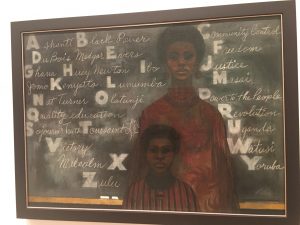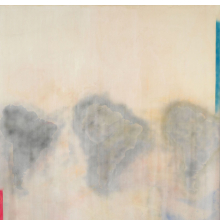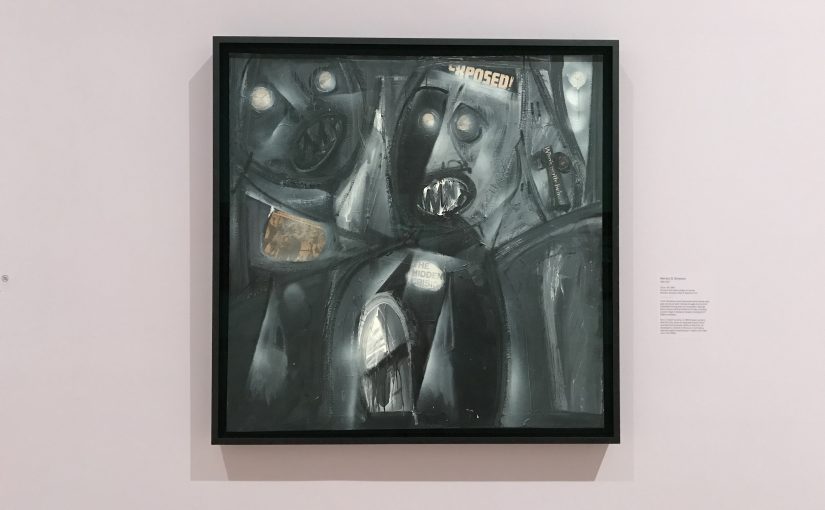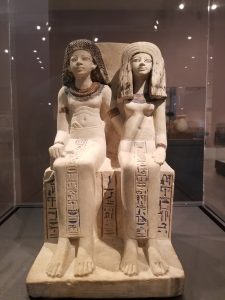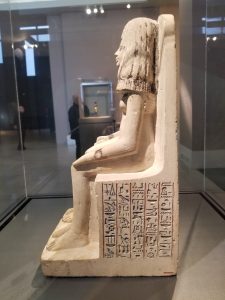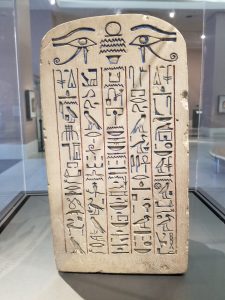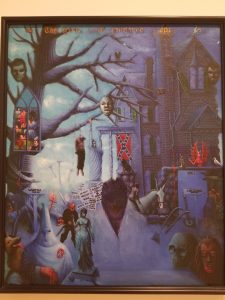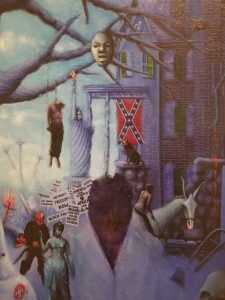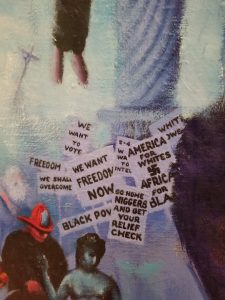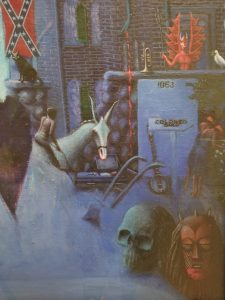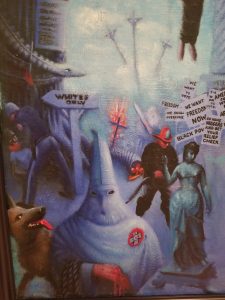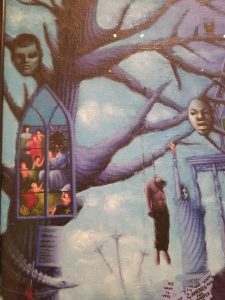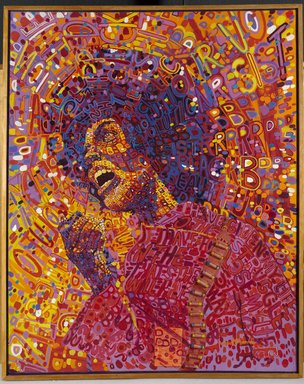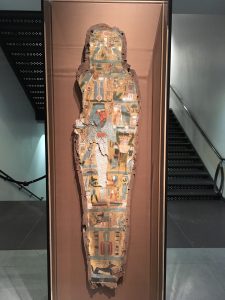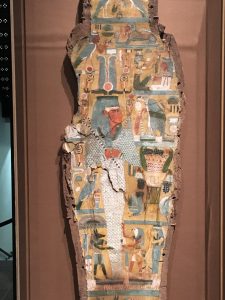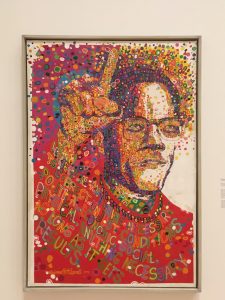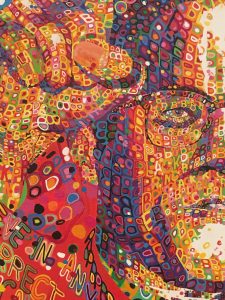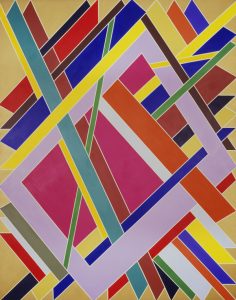Soul of a nation is a very breathtaking exhibit. It takes up two floors on one side of the museum, and it is filled with artwork that sends a strong message about african american lives in America. One painting that really struck out to me in the exhibit had to be Archibald Motley’s “The First One Hundred Years: He amongst You Who Is without Sin Shall Cast the First stone; forgive Them Father for They Know Not What They Do, circa 1963-72.“My first reaction when I saw this painting was complete horror but as I started to really analyze it deeper I realized that as horryfing as this is, it really is a representation of the reality of America in years of 1963-1972.
From the start, I felt as though my eye didn’t know where to start because of the fact that there is just so much going on in the painting. This painting is a medium sized oil paint on canvas and the painting has very dark hues of blue but the blue also makes the small hints of red really pop out. My eye immedietly goes to the only part that is light blue, in the painting which is where the tree is. When the eye follows the branches, it can immediately find the haunting faces of John F. Kennedy and Martin Luther King that are hung on the train. Right under the face of John F I see something that reminds me of stained glass that usually belongs in a church. However, a part of the glass has been shattered right where a figures head is at. My guess is that the figure is Jesus. As the eye follows the branches downwards, we also see a disturbing image of a lynched body next to the statue of liberty. The eye keeps on being guided towards the bottom and this is where we see the blue color becomes darker. The red color becomes more striking when we see the red in the KKK member, in the burning cross, the fireman hat, and as our eye moves to the right we see striking red confederate flag, the blood coming out of the pipe of the house, and the devil that is standing next to the dove. The lines of this painting are fairly straight when we focus on the tree and the house but they become rounder once we focus on the figures ofthe painting and faces that are shown. It’s interesting to see how the darker colors on the left are brought forward with the light color in the background and on the right we see the darker color in the background with aspects of light color in the forefront. Something that I also noticed was the brushwork. The brushwork is precise in the tree and house but it becomes the opposite in the rest of the painting making me feel like everything is in motion and happening simultaneously.
The subject matter seems to be pretty obvious. It shows the vicious crimes that were done in the name of racism. We have the subject of murder come about in just the tree by itself. The faces of two significant figures who were brutally murdered because of the positive impact they had on race issues during the 60’s. We also see the KKK being represented by a member being in the front of the painting and the burning of the cross. The painting also has the representation of the marches that were done. The signs that are shown say “we want to vote,” “we shall overcome,” “freedom,” “we want to vote,”and “black power.” In contrast, we have messages that many white people had for black people which were “go home niggers and get yourrelief check,” “America for whites. Africa for blacks.” On the right, we see a lot more symbolism. We see a skull which can represent all the death along with the blood coming out of the house, we see the devil next to a dove which can represent how evil was always alongside the peace that African Americans wanted, and we also see slavery being represented by having the women on the far right picking cotton. All these things represent what hundred years of racism looked like.
This was Archibald Motley’s last painting after five decades of being an artist. Motley was known for painting pictures of black social life. With this painting in particular, it’s almost as if he went out with a bang. This painting is so chaotic and has so much going on and it really does capture the horrors of American history. 